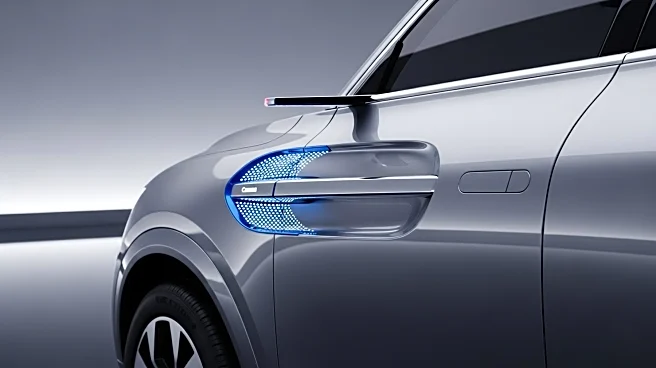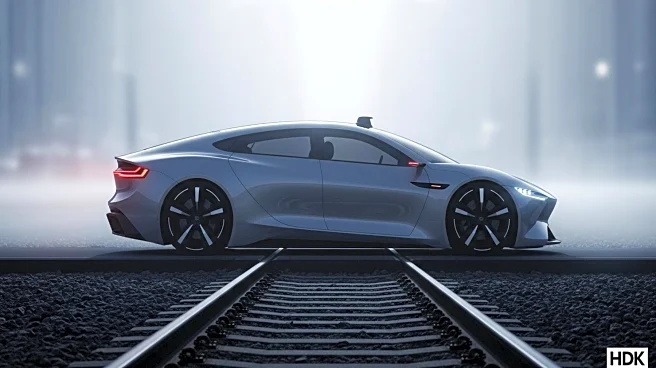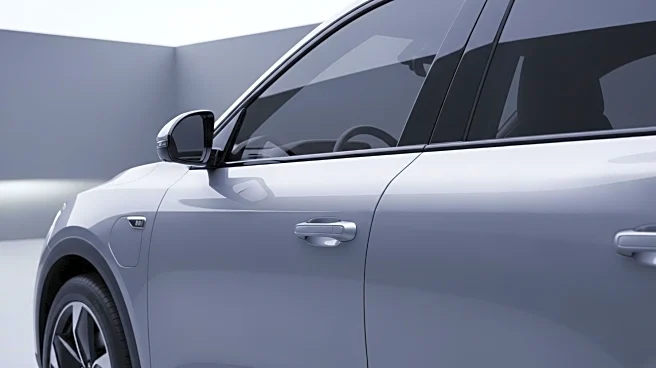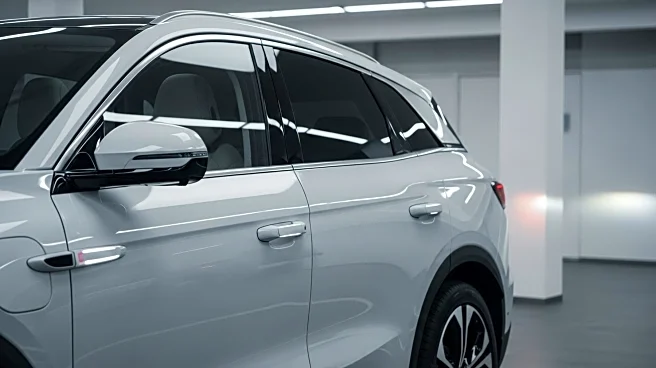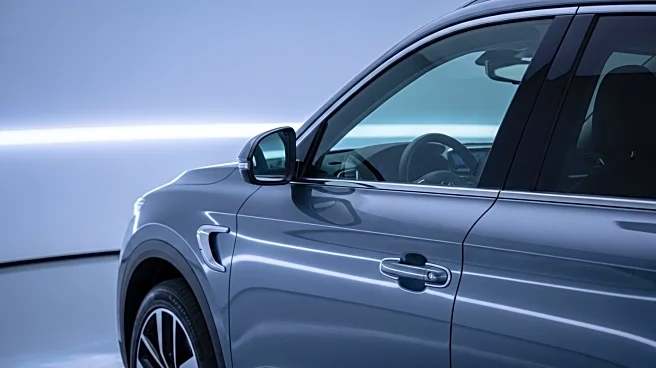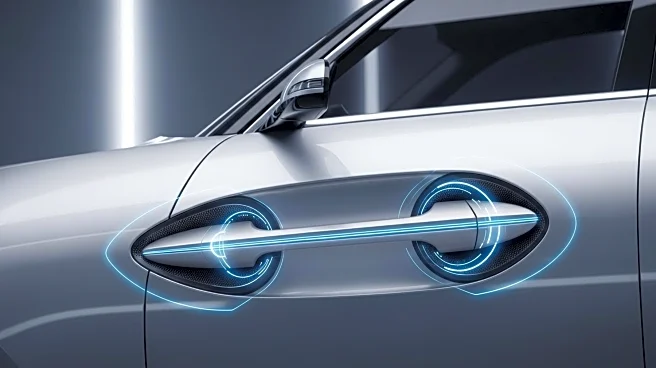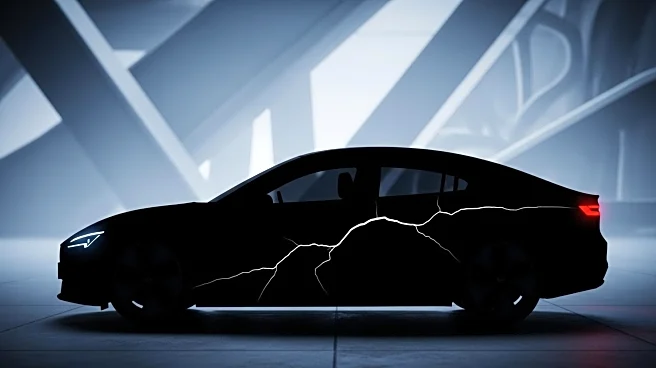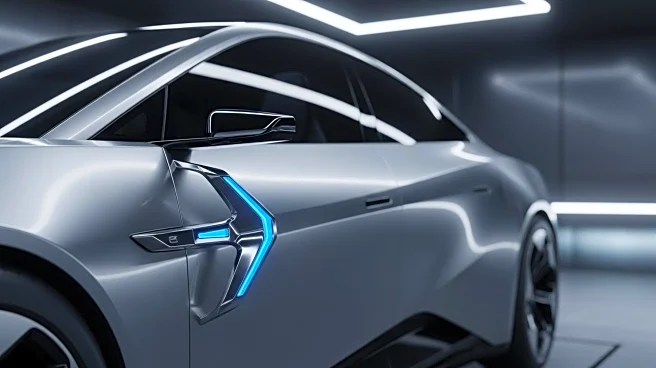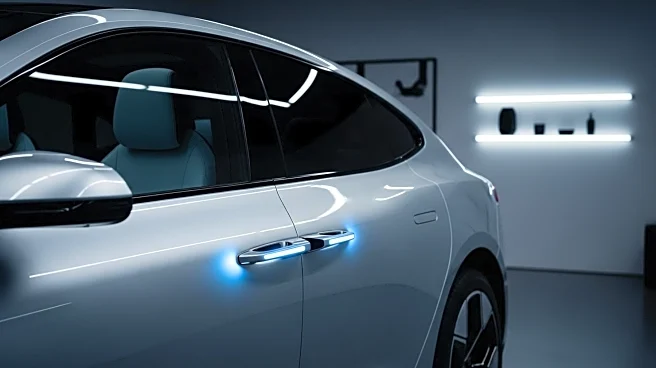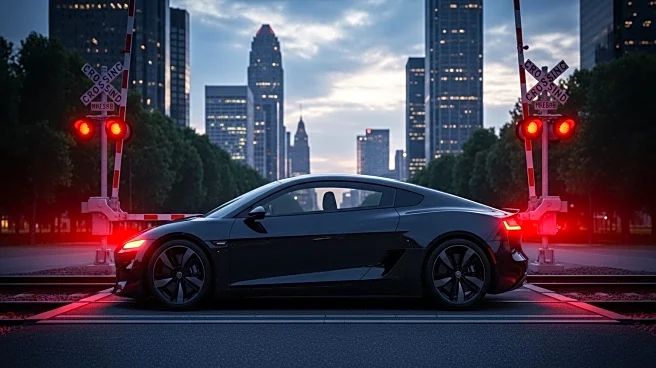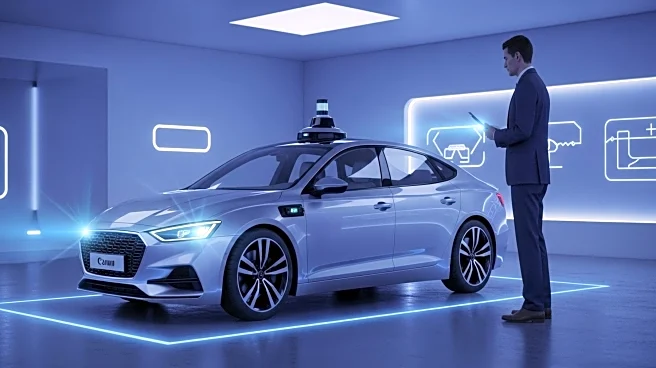What is the story about?
What's Happening?
Rivian Automotive is addressing safety concerns by redesigning the door operating hardware for its upcoming R2 SUV model. The company plans to incorporate a more visible manual release mechanism near the electrically powered interior handles in the rear doors. This move comes in response to criticisms similar to those faced by Tesla, whose vehicles have been involved in lawsuits due to their door handle designs. Rivian's current models have emergency rear door release cables hidden behind unmarked panels, which has raised safety concerns. Despite these issues, Rivian asserts that its designs comply with all federal safety standards.
Why It's Important?
The redesign of Rivian's door hardware is significant as it highlights the growing scrutiny on vehicle safety features, particularly in electric vehicles. The move could impact consumer trust and influence purchasing decisions, as safety is a critical factor for buyers. Rivian's decision to make the manual release more visible may set a precedent for other automakers to prioritize intuitive safety features. This development also underscores the importance of regulatory compliance and the potential legal implications for companies that fail to address safety concerns adequately.
What's Next?
Rivian's redesigned R2 SUV is expected to be available next year, and the company will likely monitor consumer feedback and regulatory responses closely. The National Highway Traffic Safety Administration (NHTSA) may also review and potentially update safety standards to address these concerns more comprehensively. Other automakers might follow suit, reassessing their vehicle designs to enhance safety features and avoid similar controversies.
Beyond the Headlines
The issue of vehicle safety extends beyond immediate consumer concerns, touching on broader ethical and legal responsibilities of automakers. As electric vehicles become more prevalent, the industry may face increased pressure to innovate not just in terms of technology and performance, but also in ensuring user safety. This could lead to long-term shifts in design priorities and regulatory frameworks.
AI Generated Content
Do you find this article useful?
